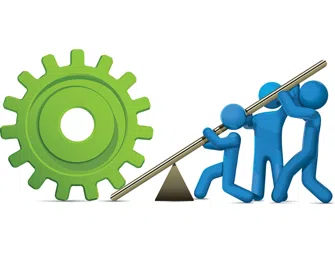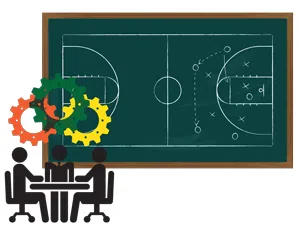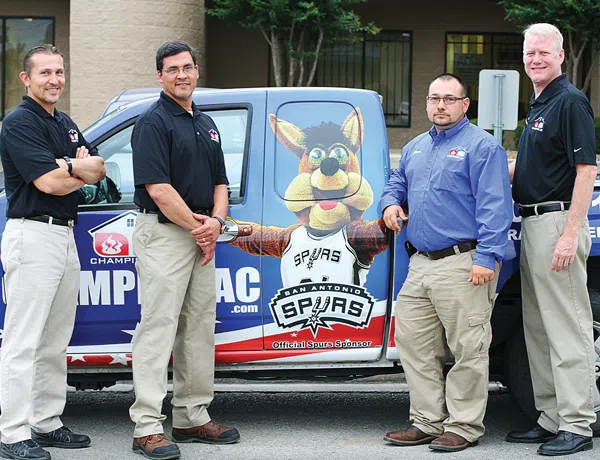Build on your strengths instead of dwelling on your weaknesses
What seems like the logical way to solve common challenges HVACR businesses face is to focus on the things that aren't working, and figure out how to fix them.
The conventional problem solving tools of deductive reasoning, however, have continued to produce similar outcomes from one business to the next. What we focus on, we often create more of — if we're only able to see what's broken, we may never find what's working.
This is where a technique in organizational development called Appreciate Inquiry (AI) may come to your aid. AI is a model of organizational development that asks leaders to shift to a positive perspective by examining the things an organization does well and thereby leveraging its innate strengths to outweigh its limitations whether they be budgetary or otherwise.
The AI approach was born out of the research of Case Western Reserve University whereupon leaders recognize the value the contributions of things and people around them (appreciation), and then explore, discover and understand more about these possibilities (inquiry).
This is done in what is called the 5D approach — Define, Discover, Dream, Design and Deliver.
Define
You have to be able to define the scope of an AI's focus. Rather than make it "how do we continue to produce the same level of productivity with fewer staff," say "how do we accelerate the productivity of our existing staff?"
The phrasing of a focus is critical to what answers come in the subsequent steps of an AI. Remember, seek and you shall find.
Discover
Identify the organizational processes that work well. This can be done by making daily rounds face-to-face with team members and organizational units to both establish rapport, but also to probe deeply into what makes their jobs easier or find what solutions they've developed to address some of their common challenges, thus to become an investigator within your own organization.
Through the process of discovery, you're able to not only have greater understanding with your employees, but also to identify potential issues before they become a problem. Through AI you empower your team members to have greater access to you as a leader, and they empower you to discover what works.
Dream
Envisioning the future can become what science often calls a "strange attractor." This is about the ability to clearly identify where you're going and routinely share that vision with others either through your repeat discovery procedures or through organizational communications such as newsletters and emails.
The dream step allows you to communicate a shared vision that others can be inspired to contribute toward, and invite them to dialogue.
Design
This is the inventory process by which you take note of all the planning and priorities that would work well in the future. Again, the key here is to continue to be solutions-focused and thus future-focused, and to allow the dream and visioning process to quickly roll over into asking yourself and others, "What might that look like?"
For example, let's say that Robert is a line worker in a factory and he has told you when you were rounding during the discovery procedure that he really likes it when the Tuesday shipment of supplies he needs to do his job comes before lunch. When the shipment comes on Tuesday mornings, he tells you that it allows him to notify his peers to pick them up in the afternoon. There's been a problem with other areas being at a standstill unable to do their jobs often on Wednesday mornings because they have no supplies. If you were to design a process by which the inventory was distributed more routinely on Tuesday mornings, how could you design a process that would ensure those successes could be repeated each and every time?
This is process engineering 101, but with a positive twist! It's not about fixing the unproductive Wednesday mornings; it's about focusing on Robert's successes and amplifying them.
Deliver
This is where the rubber meets the road and all that hard work of having crucial conversations with others through discovery, inspiring them to think more about what works best might look like through dreaming, and then designing it out into form. This may require the formation of strategic task forces, or subunits that are responsible for implementation. But again, this step is about the execution of the proposed design through shared governance and inclusion.
The principles of AI are based on the idea that when you build upon your strengths rather than focusing upon your weaknesses, you create empowered solutions that become like a happy virus infecting all those around you. Then suddenly, when people come knocking on your door with a problem, they know to come with some ideas and solutions in hand that can be easily implemented to leverage their own strengths toward greater success.
The key to implementation of appreciate inquiry is through communicating the AI philosophy to all members of the team. The old and outdated approach of identifying problems, analyzing causes, possible solutions, and then activating treatments based on those possible solutions is only a three dimensional approach. The Five-Ds are five dimensions of managerial problem solving that ensure that leaders are able to transform organizational challenges into amplifications of possibility.
Chris Walling, MBA is a speaker, consultant and former academic medical executive. Chris Walling Consulting is a business and personal consulting firm dedicated to empowering leaders to create innovative, creative solutions to today's complex and chaotic business environment. For additional information, visit
www.chris-walling.com.





